Why Visiting Nantong Museum Will Enrich Your Understanding of Jiangsu Province

An Essential Guide to Visiting Nantong Museum
Nestled in the heart of Nantong, the Nantong Museum (南通博物馆) stands as a treasure trove of local history and culture, inviting visitors to step back in time and explore the fascinating narrative of this lesser-known gem in Jiangsu Province. One of its most unique features is its stunning landscaped gardens, which not only provide a serene backdrop for leisurely strolls but also host a variety of local activities, from Tai Chi to traditional dance, offering a glimpse into the vibrant community spirit of Nantong.
In this guide, we will delve into the highlights of the Nantong Museum, including its rich exhibitions that showcase the city’s heritage, notable figures such as Zhang Jian, and its impressive collections of pottery and stuffed wildlife. We’ll also provide practical tips on visiting, including the best times to enjoy the museum grounds and nearby attractions. Whether you’re a history buff, a nature lover, or just seeking a quiet spot to unwind, Nantong Museum promises an enriching experience that captures the essence of this historical city.
In This Guide
- An Essential Guide to Visiting Nantong Museum
- The Rich History and Legends of Nantong Museum
- Main Highlights: What You Absolutely Can’t Miss
- Planning Your Visit: A Practical Guide
- Tickets: Prices, Booking, and Tips
- How to Get There: A Complete Transportation Guide
- Local Cuisine and Accommodation Nearby
- Frequently Asked Questions
- Final Thoughts on Your Trip
The Rich History and Legends of Nantong Museum
A Journey Through Time: The Story of Nantong Museum
Nestled in the vibrant city of Nantong, the Nantong Museum serves as a time capsule, offering visitors a glimpse into the rich tapestry of the city’s history and culture. Established in 1905, this museum is not only one of the oldest in the region but also a testament to the enduring legacy of Nantong.
Early Foundations: The Birth of a Cultural Hub
The museum’s origins date back to the early 20th century, during a period when Nantong was blossoming into a key economic and cultural center in Jiangsu Province. Founded by Zhang Jian, an influential figure in China’s modern history, the museum was initially created to preserve and promote local heritage. Zhang Jian was a prominent educator, entrepreneur, and reformer who believed in the importance of cultural preservation as a foundation for progress.
The Evolution of Exhibitions: From Local Artifacts to National Treasures
Throughout the decades, the Nantong Museum has undergone several transformations, expanding its collection to include not only artifacts that represent Nantong’s history but also items of national significance. The museum showcases diverse exhibits, ranging from pottery and ancient textiles to photographs documenting the city’s evolution. As visitors wander through the halls, they can trace the arc of Nantong’s development, from its agrarian roots to its rise as a modern city.
Legends and Lore: The Spirits of Nantong
The museum is steeped in local legends that add an enchanting layer to its historical narrative. One such story revolves around the “Spirit of the Yangtze,” a mythical guardian said to protect the city and its inhabitants. According to folklore, the spirit emerged during a time of crisis when Nantong faced natural disasters. The townsfolk prayed for salvation, and in gratitude for their devotion, the spirit vowed to watch over them, leading to the establishment of many local traditions that celebrate resilience and community.
Another captivating legend associated with the museum is that of the “Cultural Phoenix.” This tale tells of a great fire that nearly destroyed the museum’s early collections. Miraculously, not a single artifact was lost, and from the ashes, the museum was reborn, symbolizing the enduring spirit of Nantong and its commitment to cultural preservation.
A Modern Museum with a Historic Heart
Today, the Nantong Museum stands as a vital part of the community, offering educational programs, workshops, and cultural events that engage locals and visitors alike. The museum’s landscaped gardens provide a serene environment for reflection, while its galleries invite exploration and discovery. Despite facing challenges over the years, including renovations and modernizations, the museum has remained a steadfast guardian of Nantong’s heritage, making it a must-visit destination for anyone seeking to understand the city’s past and its legends.
Conclusion: A Tapestry Woven with Stories
As you stroll through the Nantong Museum, you are not just an observer of history; you become a part of the ongoing narrative that shapes this remarkable city. Each exhibit is a thread in the rich tapestry of Nantong’s identity, woven together with stories of resilience, innovation, and the timeless allure of legend. Whether you are an avid history buff or simply curious about local culture, the Nantong Museum offers an unforgettable journey through time and tradition.
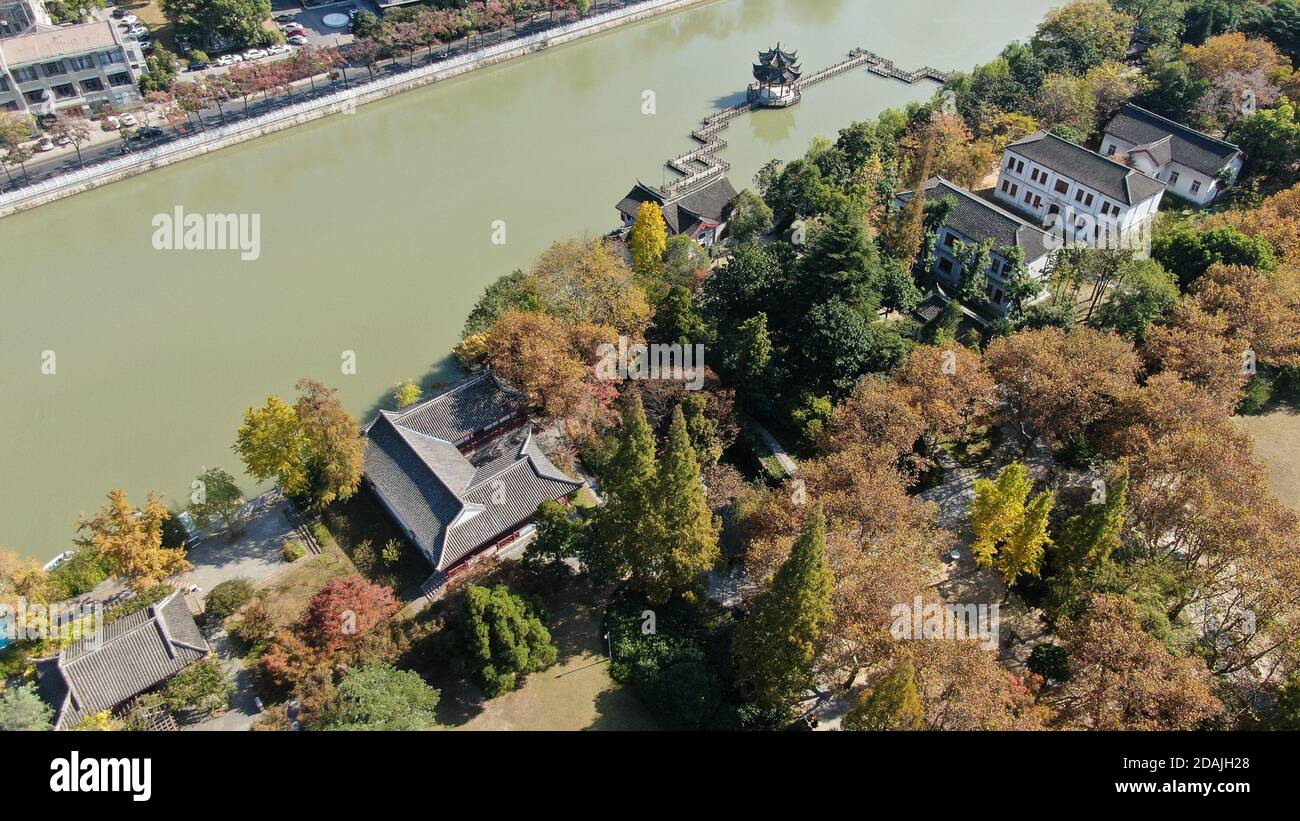
Nantong Museum.
Main Highlights: What You Absolutely Can’t Miss
A Journey Through Time: Explore the Nantong Museum
Nestled in the heart of Nantong, the Nantong Museum is a treasure trove of history, art, and culture. With its serene gardens and diverse exhibitions, it offers international travelers a unique glimpse into the past of this vibrant city. Here are the must-see highlights that you absolutely can’t miss:
1. Historical Exhibits: The Story of Nantong
Delve into the rich history of Nantong through its captivating exhibits. The museum features artifacts and displays that chronicle the city’s evolution from a small trading post to a bustling modern metropolis. Don’t miss the sections dedicated to Zhang Jian, a pivotal figure in Nantong’s development, whose contributions have shaped the region. Tip: Allow at least an hour to immerse yourself in the stories presented through well-curated displays.
2. Pottery and Photography Gallery
Art lovers will appreciate the gallery showcasing traditional Nantong pottery, which reflects the city’s artistic heritage. Alongside, a collection of historical photographs provides a window into everyday life in Nantong throughout the decades. Tip: Bring your camera! The juxtaposition of historic pottery and photography makes for stunning visual storytelling.
3. The Natural Garden
Step outside to explore the museum’s beautifully landscaped gardens. This tranquil space is perfect for a leisurely stroll or a quiet moment of reflection. With various plants and a serene lake, it’s a picturesque spot to escape the hustle and bustle of the city. Tip: Visit early in the morning, especially in summer, to enjoy the cool breeze and maybe even catch locals practicing Tai Chi.
4. Marine Life Exhibits
While some may find the whale museum a tad underwhelming, the marine life exhibits are a delightful addition that should not be overlooked. They provide insights into the ecological diversity of Nantong and its surrounding waters. Tip: Keep an eye out for interactive displays that may offer a hands-on experience, especially for families with children.
5. Architectural Marvels
The museum itself is an architectural gem, featuring buildings that date back to its establishment in 1905. The blend of traditional and contemporary design elements tells a story of Nantong’s architectural journey. Tip: Take a moment to appreciate the intricate details and historical significance of the various structures as you roam the grounds.
6. Cultural Artifacts
Don’t miss the section dedicated to cultural artifacts, where you can find items that reflect the daily lives and traditions of Nantong’s people. From traditional clothing to household items, these exhibits capture the essence of local culture. Tip: Look for guided tours or informational plaques that can enhance your understanding of the significance of these artifacts.
7. Gift Shop and Café
Before you leave, stop by the gift shop for unique souvenirs that celebrate Nantong’s culture. From handcrafted pottery to local snacks, there’s something for everyone. Adjacent to the museum, a charming café awaits, offering refreshments and a cozy spot to unwind. Tip: Try some local specialties while you soak in the view of the gardens.
Exploring the Nantong Museum is more than just a visit; it’s an opportunity to connect with the rich tapestry of history and culture that defines this remarkable city. Whether you’re a history buff, an art enthusiast, or simply seeking a peaceful retreat, this museum has something special for every traveler.
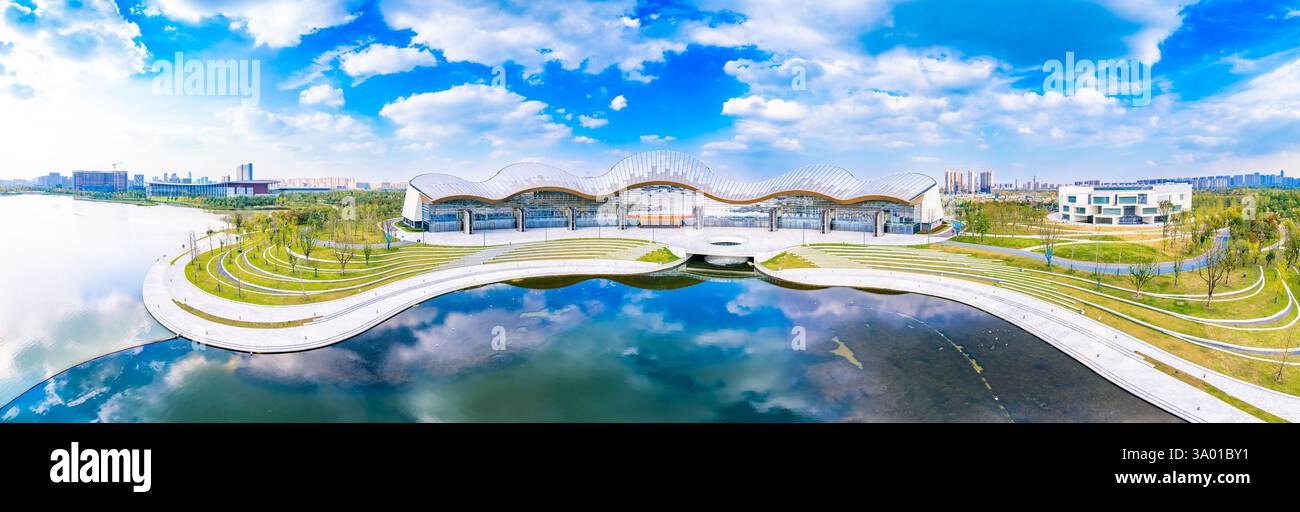
Nantong Museum.
Planning Your Visit: A Practical Guide
Best Time to Visit
Nantong Museum is open year-round, but the best time to visit is during the spring and autumn months (April to June and September to November). During these periods, the weather is mild and pleasant, making it ideal for exploring both the museum and its beautifully landscaped gardens. If you plan to visit in the summer, aim to arrive early in the morning to beat the heat and enjoy a leisurely stroll around the lake and gardens before the crowds arrive.
Recommended Itinerary
To make the most of your visit to Nantong Museum, consider the following itinerary:
-
Morning (9:00 AM – 11:30 AM): Start your day at the museum. Allocate about 1.5 to 2 hours for exploring the various halls. Don’t miss the exhibits that focus on Nantong’s history and the contributions of Zhang Jian, a significant figure in the city’s development.
-
Late Morning (11:30 AM – 12:30 PM): After your museum visit, take a walk through the museum’s gardens. This tranquil space is perfect for a peaceful break and offers beautiful views of the lake.
-
Lunch (12:30 PM – 1:30 PM): Head to one of the nearby cafes or restaurants to enjoy a local meal. Options include Chinese cuisine and cafes offering snacks and coffee.
-
Afternoon (1:30 PM – 3:00 PM): If time allows, explore other attractions near the museum, such as Wenfeng Park or the China Abacus Calculation Museum, both of which offer unique insights into local culture.
Photography Tips
-
Natural Light: The museum’s gardens are best photographed in natural light, so visit during the day when the sun is shining. Early morning or late afternoon light can add a golden hue to your photos.
-
Exhibition Shots: When photographing exhibits inside the museum, consider using a wider aperture to reduce reflections from glass displays. If possible, use a camera with good low-light performance, as some halls may be dimly lit.
-
People in Frame: Capture the essence of the museum by including visitors engaging with exhibits. This adds a human element to your photos and showcases the museum’s lively atmosphere.
What to Wear
Dress comfortably for your visit to Nantong Museum. Here are a few suggestions:
-
Footwear: Wear comfortable shoes suitable for walking, as you’ll likely spend time exploring both the indoor exhibits and outdoor gardens.
-
Layers: The museum is air-conditioned, so consider wearing layers that you can easily adjust to stay comfortable both indoors and outdoors.
-
Sun Protection: If you’re visiting during the warmer months, bring a hat and sunscreen, especially for your garden stroll.
Insider Tips
-
Free Admission: Enjoy the fact that entry to Nantong Museum is free, making it an excellent budget-friendly activity while exploring the city. Be sure to check if any special exhibitions have a fee.
-
Tai Chi in the Morning: Arrive early (around 7:30 AM) to witness locals practicing Tai Chi and other traditional exercises in the gardens. It’s a serene way to start your day.
-
Limited Exhibition Halls: Some exhibition halls may occasionally be closed for maintenance or updates. Check the museum’s website or inquire ahead of your visit to avoid disappointment.
-
Interactive Experiences: Although some reviews mention that interactive stations may not always be functioning, keep an eye out for any hands-on exhibits that might be available, enhancing your learning experience.
-
Local Snacks: After your visit, explore the nearby street food stalls and cafes for a taste of local snacks and drinks. It’s a great way to immerse yourself in Nantong’s culinary scene!
With this practical guide, you’re well-equipped to enjoy a fulfilling visit to Nantong Museum, uncovering the rich history and culture of this fascinating city.
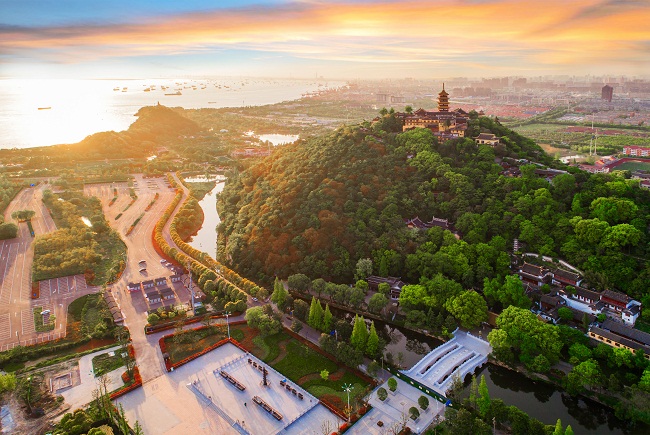
Nantong Museum.
Tickets: Prices, Booking, and Tips
Visiting the Nantong Museum is a delightful experience, especially for those looking to delve into the rich history of Nantong and its cultural heritage. Here’s everything you need to know about tickets, booking, and some handy tips to enhance your visit.
Ticket Information
| Ticket Type | Price (CNY) | Includes |
|---|---|---|
| Adult Ticket | Free | Access to all exhibition halls and gardens |
| Student Ticket | Free | Access to all exhibition halls and gardens (valid student ID required) |
| Group Tour Ticket | Free | Access for groups (10 or more) to all areas |
Booking Details
-
Advance Booking: While entry to the Nantong Museum is free, it is highly recommended to book your visit in advance, especially during peak tourist seasons or weekends. This can help ensure that you secure your spot and avoid disappointment, particularly if you’re visiting as part of a larger group.
-
How to Book: Reservations can be made through the museum’s official website or by contacting them directly via phone. You can also inquire about guided tours or special exhibitions that may require prior booking.
Tips for Your Visit
-
Best Time to Visit: To enjoy the museum and its beautiful gardens, consider arriving early in the morning, especially during the summer months. This allows you to experience the serene atmosphere and witness locals engaging in traditional exercises like tai chi.
-
Plan Your Time: Allocate about 1-2 hours for the museum, but if you wish to stroll through the gardens or have a picnic, plan for an additional hour or two.
-
Check for Updates: Before your visit, check the museum’s website for any notices regarding temporary closures or renovations of specific exhibition halls.
By keeping these details in mind, you’ll be well-prepared to enjoy an enriching visit to the Nantong Museum and discover the vibrant history of this fascinating city!
How to Get There: A Complete Transportation Guide
Accessing Nantong Museum: Your Travel Guide
Nantong Museum, located in the heart of Nantong, Jiangsu Province, offers a fascinating glimpse into the local history and culture. Getting there is straightforward, whether you’re arriving from a nearby city or navigating the local area. Below is a comprehensive guide to help you plan your visit.
From the Nearest Major City: Shanghai
By Train:
The fastest way to reach Nantong from Shanghai is by taking a high-speed train. Trains leave from Shanghai Hongqiao Railway Station to Nantong Railway Station, with a travel time of approximately 1.5 to 2 hours. Ticket prices typically range from CNY 70 to CNY 150 (about USD 10 to USD 22), depending on the class chosen.
By Bus:
Buses are another convenient option. Departing from Shanghai’s Long Distance Bus Terminal, the journey to Nantong takes around 3.5 to 4 hours, with ticket prices averaging around CNY 50 (approximately USD 7). Buses run regularly throughout the day, making this a flexible option.
By Car:
If you prefer driving, the distance from Shanghai to Nantong is about 160 kilometers (100 miles), taking around 2.5 hours via the G15 highway. Note that tolls will apply along the route, so budget accordingly.
From Nantong Railway Station
Once you arrive at Nantong Railway Station, getting to the museum is easy:
By Taxi:
Taxis are readily available at the train station. The ride to Nantong Museum will take about 15 to 20 minutes, costing approximately CNY 30 (around USD 5).
By Public Bus:
Alternatively, you can take bus line 6 or 15 directly to the Nantong Museum. The bus ride will take around 30 minutes, and the fare is just CNY 2 (less than USD 0.50).
Getting Around the Scenic Area
Nantong Museum is located in a picturesque area, making it easy to explore nearby attractions.
Walking:
The museum is surrounded by beautiful gardens and parks, ideal for a leisurely stroll. Plan to spend some time walking around the landscaped grounds to fully appreciate the serene environment.
Bicycles:
For those who enjoy cycling, consider renting a bike. Several rental shops are nearby, allowing you to explore the scenic area at your own pace. Rentals typically cost around CNY 10 to CNY 30 (USD 1.50 to USD 5) per hour.
Local Taxis and Ride-Sharing:
If you want to venture further afield, local taxis are a convenient option, and ride-sharing apps like Didi are widely used in Nantong. Both options are affordable and can take you to nearby attractions such as the Hao River or local shopping districts.
Conclusion
Whether you’re arriving from Shanghai or exploring Nantong itself, getting to Nantong Museum is an easy and enjoyable experience. With a variety of transportation options at your disposal, you can focus on soaking in the rich history and culture of this charming city. Enjoy your visit!
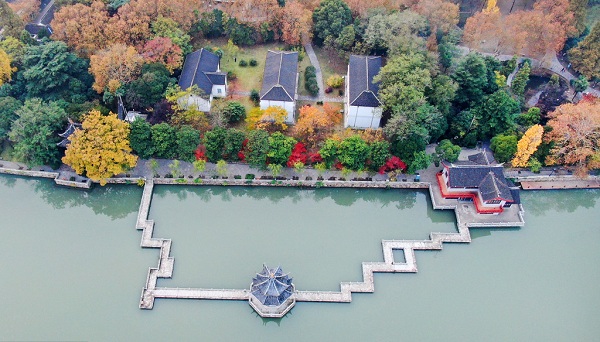
Nantong Museum.
Local Cuisine and Accommodation Nearby
When visiting the Nantong Museum, a delightful blend of local cuisine and nearby accommodation awaits you. Immerse yourself in the flavors of Nantong and enjoy a comfortable stay in the vicinity.
Local Cuisine
-
Nantong Noodles (南通面条): A must-try, these handmade noodles are often served in a rich broth with a variety of toppings, including fresh vegetables and meats. The noodles are celebrated for their chewy texture, making them a comforting option after a day of exploration.
-
Seafood Dishes: Given Nantong’s riverside location, seafood is a staple here. Popular dishes include steamed crabs and braised fish. The local specialty, Nantong style steamed crab, is served with a light soy dipping sauce, highlighting the freshness of the catch.
-
Zhejiang Cuisine: Explore the regional flavors of Zhejiang at restaurants around the museum. Dishes like Dongpo Pork and West Lake Fish in Vinegar Gravy are not to be missed. These dishes offer a sweet and savory profile, showcasing the culinary heritage of the nearby Zhejiang Province.
-
Street Snacks: Don’t overlook the local street food scene. Try scallion pancakes and sweet potato balls, which are both popular snacks among locals. They’re perfect for a quick bite before or after your museum visit.
Accommodation Options
-
Luxury: Nantong Hyatt Regency – Experience upscale comfort at this luxurious hotel, featuring elegant rooms, a spa, and fine dining options. It’s a short drive from the museum and offers stunning views of the Yangtze River.
-
Boutique: Nantong Shanshui Boutique Hotel – For a more intimate stay, consider this charming boutique hotel that combines modern amenities with traditional design elements. Located close to the museum, it allows easy access to local attractions while providing a unique ambiance.
-
Budget: 7 Days Inn Nantong – If you’re traveling on a budget, this budget-friendly option offers clean and comfortable rooms at an affordable rate. It’s conveniently located within walking distance of the museum and local eateries, making it a practical choice for budget-conscious travelers.
With its rich cultural offerings and local flavors, Nantong is a destination that promises to satisfy both your palate and your desire for a cozy place to rest after a day of exploration.
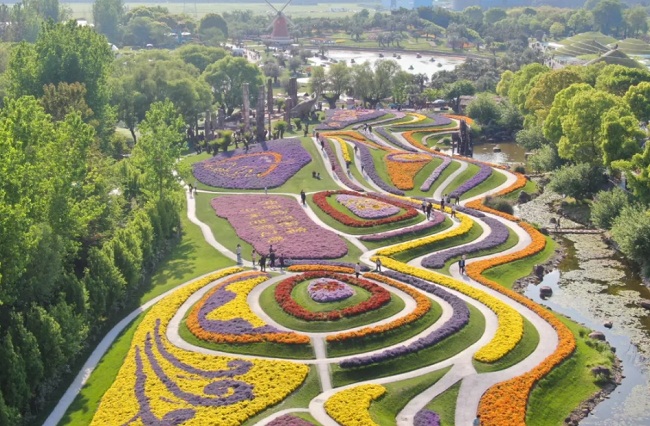
Nantong Museum.
Frequently Asked Questions
Frequently Asked Questions about Nantong Museum
1. Is Nantong Museum suitable for children and the elderly?
Yes, Nantong Museum is suitable for visitors of all ages. The museum offers a variety of exhibits that can engage children, such as pottery and stuffed animal displays. The landscaped gardens also provide a lovely space for families and seniors to enjoy a leisurely stroll.
2. Are there English signs and information available?
Yes, the museum features English translations for many of its exhibits. While some translations may not be perfect, you will find enough information to understand the displays and the history they represent.
3. How much time should I plan to spend at the museum?
Most visitors find that spending about 1 to 2 hours is sufficient to explore the main exhibits. If you wish to stroll through the gardens or relax by the lake, consider extending your visit to around 3 hours.
4. What are the opening hours of Nantong Museum?
The museum is open daily from 9:00 AM to 5:00 PM, including weekends and public holidays. It’s advisable to arrive early, especially during summer, to avoid the heat and enjoy the gardens.
5. Is there an admission fee for the museum?
No, Nantong Museum is free to enter, making it an excellent option for budget-conscious travelers looking to learn more about the local history.
6. Are there any areas of the museum that might be closed during my visit?
While the majority of the museum is accessible, some exhibition halls may occasionally be closed for maintenance or renovation. It’s a good idea to check the museum’s official website or inquire at the entrance for any closures on the day of your visit.
7. Can I take photographs inside the museum?
Photography is generally allowed in the museum, but be sure to check for any specific signs indicating restrictions in certain exhibition areas. Always respect the exhibits and the privacy of other visitors.
8. What other attractions are nearby?
Nantong Museum is located near several attractions, including Wenfeng Park and the bustling shopping streets of Nantong. It’s a convenient stop before or after exploring the surrounding area, making it easy to plan a full day of activities.
Final Thoughts on Your Trip
As your journey through the Nantong Museum comes to a close, take a moment to reflect on the rich tapestry of history and culture that this remarkable place encapsulates. From the intriguing exhibitions showcasing the evolution of Nantong to the serene beauty of the surrounding gardens, every corner of the museum invites you to delve deeper into the city’s past and its influential figures, such as Zhang Jian.
Although some exhibits may be temporarily closed, the museum still offers a captivating glimpse into Nantong’s heritage, making it a worthwhile stop on your travels. Whether you are an avid history buff or simply looking to enjoy a peaceful stroll through its landscaped grounds, the Nantong Museum provides a unique blend of education and relaxation.
So, as you step out of this historical haven, let the stories you’ve encountered inspire your explorations of Nantong and beyond. Embrace the spirit of discovery, and carry the essence of this vibrant city with you as you continue your adventures through China. Safe travels!